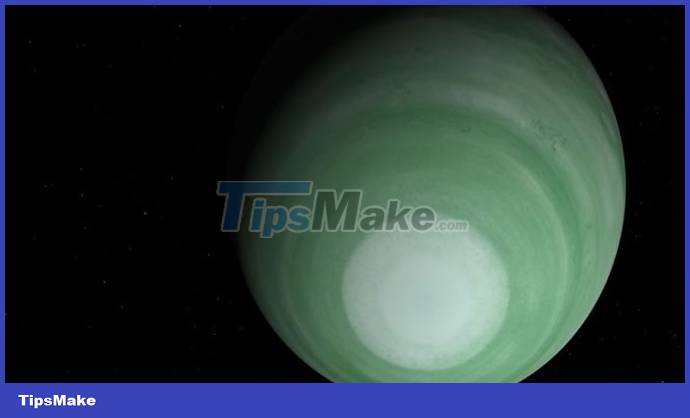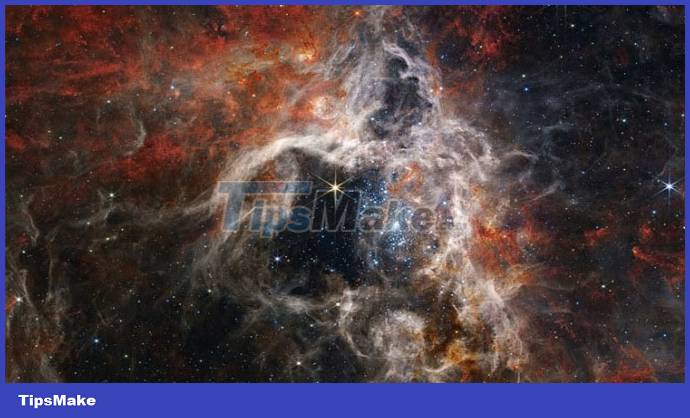The 8 largest objects in the universe
Largest planet: ROXs 42Bb

ROXs 42Bb is the largest planet found in the universe with a mass 9 times and radius 1.12 times that of Jupiter, the largest planet in the solar system. ROXs 42 Bb is 440 light years away from Earth, belonging to the exoplanet group.
ROXs are gas giants, and take 1968.3 years to complete one orbit around their host star.
Biggest star: UY Scuti

UY Scuti, the largest star in the universe, can contain 5 billion stars with a volume equivalent to the Sun. This supergiant star, located 9,500 light years from Earth, is classified as a variable star because it experiences fluctuations in brightness every 740 days.
Largest star system
The most extensive star system in the universe in terms of orbit includes just one planet (2MASS J2126) orbiting the star TYC 9486-927-1 at a distance of 1,000 billion km in space. 2MASS J2126 takes nearly 900,000 Earth years to complete one orbit.
This unique star system is 104 light years from Earth. The orbit of 2MASS J2126 is 140 times wider than the orbit of Pluto in the solar system.
Largest galaxy: IC 1101
IC 1101, the largest galaxy in the universe, is 50 times larger and 2,000 times more massive than the Milky Way.
Astronomers believe that this galaxy has about 100,000 billion stars, spanning 6 million light years, while the Milky Way is only about 100,000 light years in diameter.
Largest black hole: TON 618
TON 618 is estimated to have a mass 66 billion times greater than the Sun, located 18.2 billion light years from Earth.
Largest stellar nursery: Tarantula Nebula

Tarantula, also known as 30 Doradus, covers an area spanning 1,800 light years in the universe, and is one of the largest and brightest of all known nebulae. The Tarantula Nebula is 170,000 light years from Earth.
Largest galaxy cluster: El Gordo
ACT-CLJ0102-4915 has the nickname El Gordo meaning "the fat guy", and has a mass 3 million billion times that of the Sun. This is the largest galaxy cluster ever discovered.
Largest Entity in the Universe: The Great Wall of Hercules - Corona Borealis

The Great Wall of Hercules is a cluster of galaxies held together by gravity. With a length of 6 - 18 billion light years, light takes about 10 billion years to travel along its entire length, Hercules is said to be the largest observable entity in the universe.
You should read it
- 10 interesting facts about black holes in the universe (Part 2)
- Don't miss the biggest super moon view in 2017 in the afternoon and tonight, Vietnam can see it
- The discovery of a giant black hole, 70 times the mass of the Sun in the Milky Way, challenges every theory
- 10 interesting facts about black holes in the universe (Part 1)
- This is a photograph of the first black hole of mankind, located in a galaxy 55 million light-years from Earth
- Discover the most bizarre black holes in the mysterious space universe
 10 scariest military applications of Artificial Intelligence
10 scariest military applications of Artificial Intelligence How fast is the bullet fired from the gun?
How fast is the bullet fired from the gun? The world's most expensive telescope captures stunning views of the famous supernova remnant
The world's most expensive telescope captures stunning views of the famous supernova remnant For the first time, a 'complete' human embryo has been created without the need for eggs or sperm
For the first time, a 'complete' human embryo has been created without the need for eggs or sperm The first animals appeared on Earth
The first animals appeared on Earth The smallest cat in the world, capable of distinguishing 1 billion different odors
The smallest cat in the world, capable of distinguishing 1 billion different odors